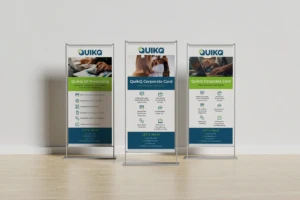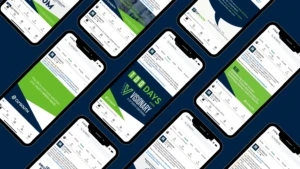AI has developed rapidly in the past couple years, and it’s more widespread than you may think.
Once the exclusive domain of arcane research institutions, AI stepped into public awareness last year with the release of ChatGPT. But that is only one example of the many AI tools now available to businesses everywhere.
You probably use AI every day without realizing it. For example, your Spotify recommendations are driven by an AI program that collects your data to make suggestions. And, whether or not you possess that kind of data, you can still use the same principles to your advantage.
Companies of all sizes apply AI in a variety of ways to achieve better results across almost every core business operation: human resources, customer service, sales, admin, accounting and more.
Let’s look at the different types of AI tools and how your business can apply them to serve as chatbots, analyze your data and perform repetitive tasks.
Open-ended versus Specific AI Tools
One way in which AI tools can be categorized is how open-ended they are.
Some tools, like ChatGPT, are highly open-ended applications. That means they don’t have a fixed purpose, and it is up to the user to figure out how to make the applications accomplish desired tasks.
Conversely, a payroll analysis system is considered a hyper-specific AI tool. Specific AI tools exist to make limited sets of decisions based on limited forms of data.
However, this categorization is more of a sliding scale than an absolute benchmark. To date, there is no such thing as general artificial intelligence like the type that has long been portrayed as the antagonist in movies like The Terminator. Even relatively open-ended tools like ChatGPT are quite restricted in their inputs and outputs.
The more open-ended the tool, the more you will have to experiment with it to get your desired results. Fortunately, there are many AI tools that carry out specific tasks in specific domains, such as accounting, HR and customer relations.
Chatbots for Customer Service
Chatbots are one of the most proven use cases for AI.
If you’ve spent a few minutes playing with ChatGPT or Bard, you know just how lifelike their conversations can sometimes appear. And that appearance is most realistic when restricted to short, domain-specific conversations—like customer service interactions.
One difficulty with facilitating customer service is the high degree of redundancy involved. Shopify estimates that 80% of all customer service requests are about the same handful of problems.
A well-programmed chatbot should be able to handle many of these requests, and for those it cannot solve, the chatbot should be coded to hand the customer over to human representatives for further assistance.
A good chatbot will be able to scan your website for information, as well as anything else you feed it in the back end. If you have a services page and some FAQs, it will be able to answer many questions based on that information.
Having a chatbot is great for starting customer conversations, since many people would rather start a chat than send an email or make a phone call.
Using AI to Analyze Data
AI is particularly useful for noticing patterns, spotting trends and identifying errors, making it a great tool for data analysis.
AI-driven payroll platforms like Payslip and Immedis can spot trends like unequal pay and rounding errors in spreadsheets. For example, they may identify tax discrepancies occurring across countries when a business has employees all over the world.
HR platforms like Workable and Leena use AI to help with recruiting, performance reviews and measuring employee engagement. AI can even analyze internal communications to spot subtle shifts in employee sentiment—when people start using more negative language to describe their jobs, for example.
Customer Relations Management (CRM) platforms like HubSpot and Salesforce leverage AI to help build customer personas and analyze purchase histories to build customer relations and suggest likely purchases. They are capable of automatically facilitating personalized sales relationships at scale.
For example, by constructing a detailed user profile and interaction history, an AI-powered CRM may be able to suggest personalized topics for a salesperson to talk about on a call with a specific customer.
The best part is that you don’t necessarily need a large amount of data to make use of these tools, which is great news for small businesses and those with niche customer bases.
Robotic Process Automation for Admin Work
Robotic Process Automation (RPA) is a type of open-ended software that you can train to do small, repetitive computer tasks that could save human workers considerable time and effort.
Think of all the times you’ve had to manually fix every single cell in a spreadsheet because you didn’t have a viable formula that could fix every cell in one fell swoop. Utilizing an RPA program involves allowing it to capture your actions for a few minutes, enabling it to learn and subsequently automate the remaining tasks.
Some popular RPA programs include UIPath, IBM RPA and Zapier.
Now Is the Time to Experiment
There are now more affordable and widely available AI tools on the market than ever before. But because we are still in the beginning of the “AI Boom,” we are still learning how to use them properly. Additionally, the long-term, valuable use cases of AI have not yet been identified.
Like the rise of the internet a quarter century ago, businesses now are facing a technological inflection point.
The businesses that succeed with this new technology over the coming years will be the ones that experiment widely with whatever is available, and find out for themselves what works and what doesn’t.
At Brand825, we believe every company deserves access to good marketing. Give us a shout if you want to discuss marketing strategies that will work well for your business … and your budget.
Cindy Baker, Brand825’s co-founder and chief creative officer, has been spitting creative fire for more than 25 years. She has created visual solutions that drive business strategies for Mercedes-Benz, Comdata and Asurion, to name a few. When she’s not building websites or designing unforgettable logos, Cindy can be found enjoying life on a motorcycle.











